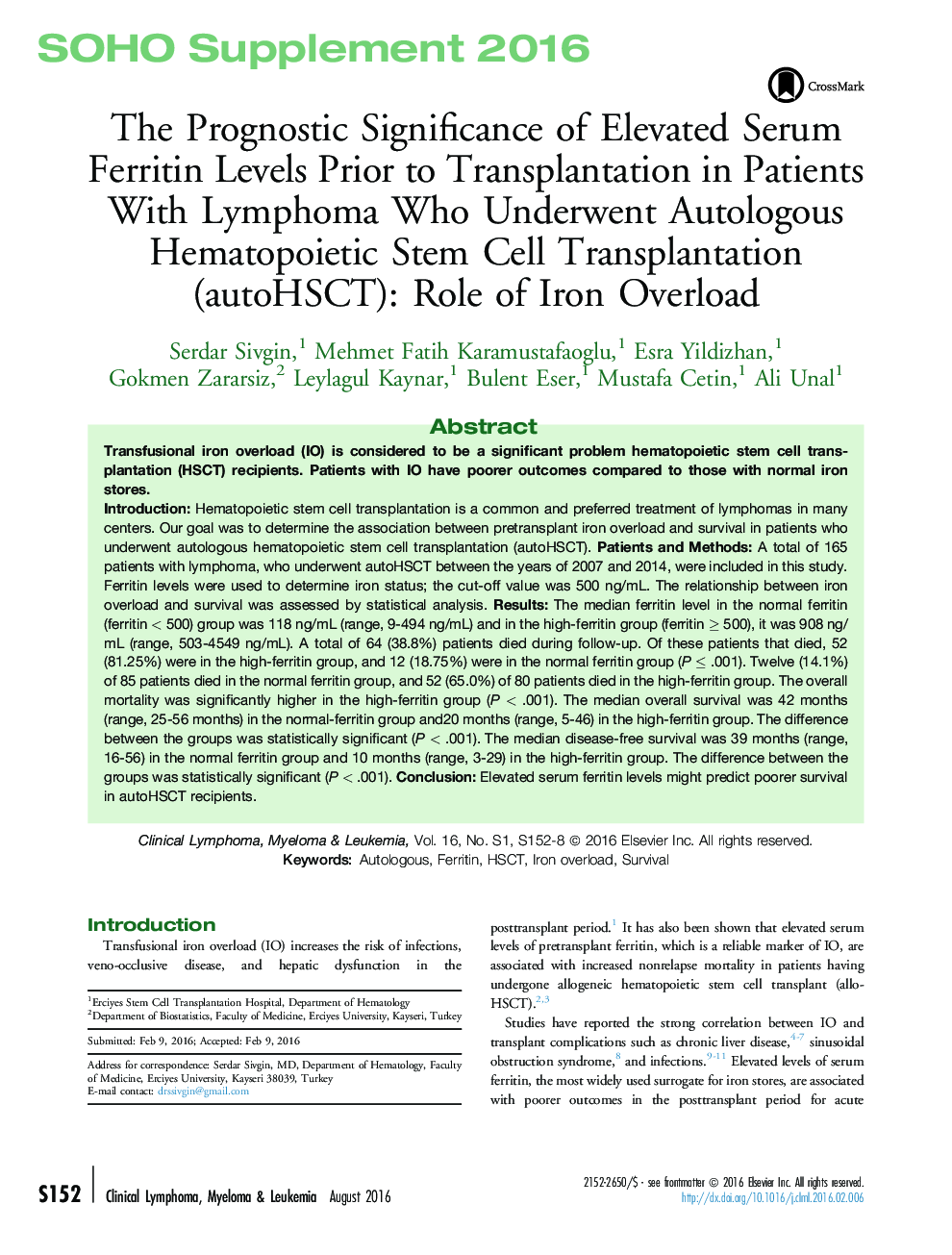| Article ID | Journal | Published Year | Pages | File Type |
|---|---|---|---|---|
| 2754422 | Clinical Lymphoma Myeloma and Leukemia | 2016 | 7 Pages |
IntroductionHematopoietic stem cell transplantation is a common and preferred treatment of lymphomas in many centers. Our goal was to determine the association between pretransplant iron overload and survival in patients who underwent autologous hematopoietic stem cell transplantation (autoHSCT).Patients and MethodsA total of 165 patients with lymphoma, who underwent autoHSCT between the years of 2007 and 2014, were included in this study. Ferritin levels were used to determine iron status; the cut-off value was 500 ng/mL. The relationship between iron overload and survival was assessed by statistical analysis.ResultsThe median ferritin level in the normal ferritin (ferritin < 500) group was 118 ng/mL (range, 9-494 ng/mL) and in the high-ferritin group (ferritin ≥ 500), it was 908 ng/mL (range, 503-4549 ng/mL). A total of 64 (38.8%) patients died during follow-up. Of these patients that died, 52 (81.25%) were in the high-ferritin group, and 12 (18.75%) were in the normal ferritin group (P ≤ .001). Twelve (14.1%) of 85 patients died in the normal ferritin group, and 52 (65.0%) of 80 patients died in the high-ferritin group. The overall mortality was significantly higher in the high-ferritin group (P < .001). The median overall survival was 42 months (range, 25-56 months) in the normal-ferritin group and20 months (range, 5-46) in the high-ferritin group. The difference between the groups was statistically significant (P < .001). The median disease-free survival was 39 months (range, 16-56) in the normal ferritin group and 10 months (range, 3-29) in the high-ferritin group. The difference between the groups was statistically significant (P < .001).ConclusionElevated serum ferritin levels might predict poorer survival in autoHSCT recipients.
